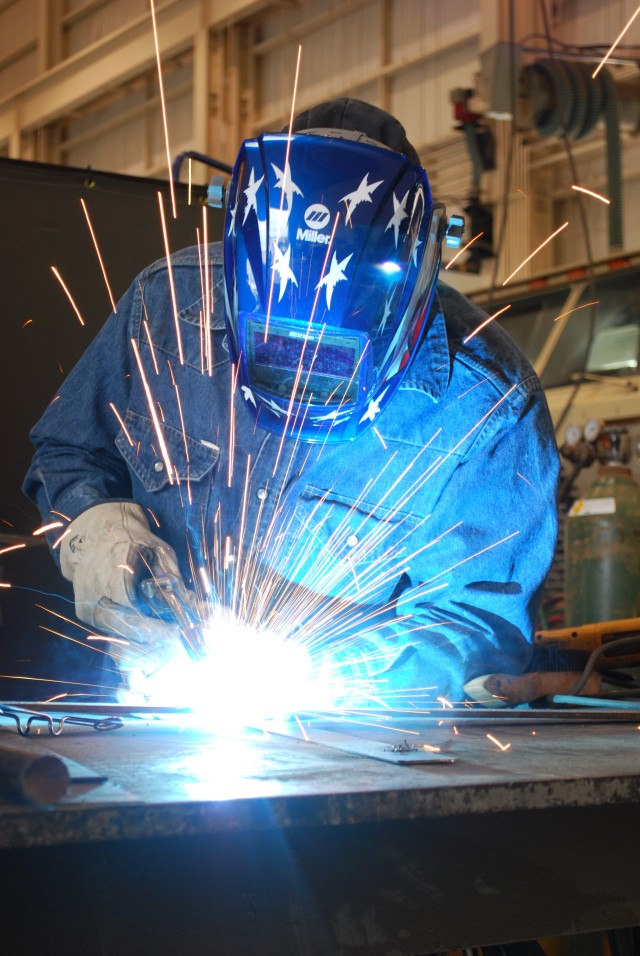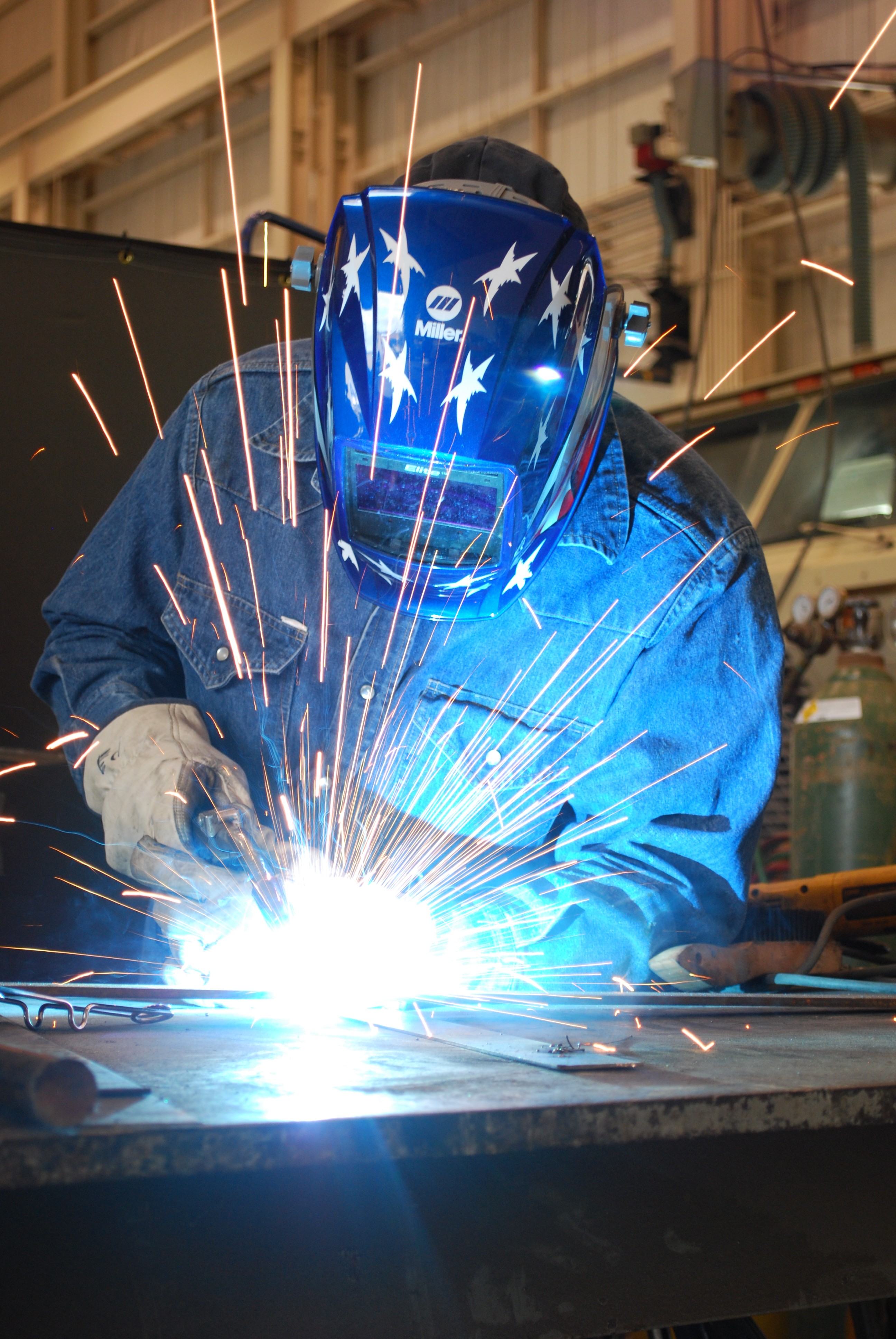FORT HOOD, Texas - The men and women of the 407th Army Field Support Brigade are keeping Soldiers' equipment in tip-top shape while working in ways that use ingenuity and resourcefulness to save taxpayer money.
Like any organization supporting the Army Materiel Command's Army Sustainment Command, the people teaming with the 407th AFSB work daily to ensure the warfighter has what is needed in Southwest Asia and elsewhere. It's a mission they embrace with pride and professionalism, as is evident in their work.
The 407th AFSB's mission is to provide a single AMC face to the field by integrating and synchronizing acquisition, logistics and technology in order to enhance the combat readiness of all Army units in its area of operations, according to the unit's briefing statement.
But the 407th couldn't complete its missions without the help of others at Fort Hood and elsewhere. A look at three work areas - Directorate of Logistics' Maintenance Operations Division, Field Logistics Readiness Center, and the Fort Hood ManTech Organization - bears this out. They understand what they're doing directly affects the Army's efforts in sustaining this nation's battle against terrorism.
"Our Soldiers are coming and going every day, units are rotating. We have a lot of equipment overseas in support; we have a little of bit of equipment that's in the rear for training," said Ed Hays, project officer, Field Logistics Readiness Center.
The FLRC previously fell under Army Forces Command prior to coming under ASC, based on the need from operations in Southwest Asia, Hays said.
The Army did not have an adequate work base to take care of the "Left Behind Equipment," as it became known. LBE is equipment a unit does not take with it during a deployment and can be reissued elsewhere where it can be used for training or to other units returning from deployment. Often, it must be repaired to bring it up to standard.
"So now we have civilian organizations that follow military leadership ... (like the) 407th (AFSB), so now you have a brigade command, you have battalion commands that fulfill them," Hays said. "They have a complement of civilians and military, and we're here to support and back up the Soldier shortages and help them keep equipment [in use] so they can adequately train to survive the war."
Hays said the FLRC supports active Army units, the Reserve, the National Guard, Air Force, and if another program manager needs something, FLRC will provide assistance.
"Everybody is getting lean ... fast, less tax dollars, quicker product and better support," Hays said of the current operations.
All total, FLRC has 30 separate work locations at Fort Hood.
Dave Slaughter, chief of maintenance, Directorate of Logistics' Maintenance Operations Division, said his division looks to the 407th AFSB basically as the workload manager.
"We work in conjunction with them, our workload, what our priorities are going to be ... they look at the bigger picture for Reset and LBE, ARFORGEN (Army Force Generation) process," Slaughter said. "And as they tell us what the priorities are, to be issued to what units, is basically how we get equipment into the shop."
ARFORGEN is a structured progression of increased unit readiness over time, resulting in recurring periods of availability of trained, ready, and cohesive units prepared for operational deployment in support of combatant commander requirements, the Army has stated.
Reset in this context is a set of actions to restore equipment to a desired level of combat capability commensurate with a unit's future mission.
"Besides what we do for Reset and the 407th, we also have our national maintenance system that we do for AMC as well for the wholesale supply system. We also have our sustainment mission supporting the rest of the installation," Slaughter explained.
On average, 21,000 work orders are completed annually through 650,000 work hours - regular time and overtime, he said.
"Between Reset and LBE we spend about $42 million a year. [Regarding] our national maintenance mission, my budget is $7 million a year; for our sustainment mission we're at $4 million. And we also have a PDTE (Pre-deployment Training Equipment) mission for the training set and that is significantly 'plussed-up' because we used to have 30 vehicles we support and now we have almost 400 to support. We have lots of things going on."
Jeff Duncan of FLRC's welding shop, cited a couple examples of how repairing equipment is saving American taxpayers' defense dollars. The costs are estimates, not exact figures.
"For example, it costs [about] $10,000 to replace a cab. We can repair it for about $500 total, labor and materials, " Duncan, a team leader employed by L-3 Communications, said.
L-3 Communications is a prime contractor that provides maintenance and other services for the Defense Department.
Another thing the shop does is manufacture small parts that are required, but hard to get, expensive and may not be cost-effective, he said.
"This panel here is $700," Duncan said, picking up a sample. "We can make this panel for $50 down here in the welding shop...time, materiel and labor. It's just one of the small things we do to help save the Army money."
Duncan said FLRC takes pride in the work they do to support the warfighter and reduce costs.
"One of the big processes we have to ensure the government gets good quality product for the dollar is we have quality assurance product control [people] go behind every single vehicle to make sure everything is done to [the Technical Manual] 10-20 standard," Duncan said. "What that means is that the vehicle is exactly as it came out of the factory minus small things such as cosmetics. The major components of the vehicle are 100 percent functional, and the Soldier has something that he can have pride in but also trust his life with."
Likewise, that pride is exhibited by people like Daveine Butler of ManTech's LBE section at a 1st Cavalry Division support motorpool.
ManTech reconciles property books, signs for LBE, then hands it over to FLRC for repairs.
It is at the motor pool where Butler and others provide direction to Soldiers bringing in equipment that is inventoried, inspected, stored, re-issued or shipped out in support of ASC's 407th AFSB.
"Everything will be laid out. We'll inventory it real quick (together). I'll call something out, they'll identify it if I don't know what it is... and then when I'm done I give them [the Soldiers] a box," she said. The box is then taped with identification information written on it.
Butler explained the section coordinates maintenance work support as needed or directed.
"If it's going to go to maintenance, they're going to bring it to [TM] 10-20 standard. If somebody at Fort Hood needs a Humvee (High Mobility Multi-Purpose Wheeled Vehicle) , and it's in this motorpool, they'll just do a lateral [transfer] ... they just give it to that Soldier ... company, battalion, whatever," Butler said.
The maintenance organizations supporting the 407th AFSB's missions are a proud, dedicated group of people. Whether it's working on a truck, rebuilding an engine, welding replacement parts, or doing the paperwork to keep track of it all, the people supporting Directorate of Logistics' Maintenance Operations Division, the Field Logistics Readiness Center, and the Fort Hood ManTech Organization, are making a big difference. They support the warfighter and the American taxpayer through their ingenuity, hard work, and pride.


Social Sharing